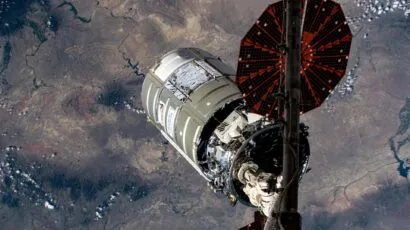The U.S. satellite shootdown: An unnecessary action
By Pavel Podvig | February 28, 2008
The intercept of the disabled USA-193 spy satellite the United States conducted on February 20 set a new benchmark for military exercises that have no benefits, but come at a tremendous political cost. The intercept topped even the U.S. decision to deploy missile defense installations in Poland and the Czech Republic as an ill-advised maneuver that could only bring scores of suspicion and mistrust–exactly what the deployments inspired in Russia, where missile defense now poisons virtually every other issue in U.S.-Russian relations. In this vein, the intercept, or more aptly, a test of an antisatellite (ASAT) capability, merely fosters further international distrust of U.S. policies and intentions.
For starters, the official U.S. explanation for shooting down the satellite with an intercept is completely unconvincing. The satellite failed shortly after its December 2006 launch, meaning there wasn’t a way to guide the USA-193’s reentry to a safe area–i.e., over an ocean. And because the satellite contained toxic hydrazine fuel, Washington claimed that anyone on the ground who came in contact with the USA-193 after its uncontrollable reentry into the atmosphere would be in danger.
Defense Department officials barely tried to present a plausible risk estimate, seemingly accepting that everyone would see the intercept for what it was–a chance to tese the U.S. missile defense system.”
That claim is almost impossible to verify. Relevant experience with the reentry of other satellites demonstrates that there’s virtually no chance of a fuel tank reaching the ground intact–the hydrazine usually safely dispersing somewhere in the upper levels of the atmosphere. But to accurately estimate the actual risk, certain details about the satellite are needed. Since USA-193 was classified, none of these details other than the approximate size and mass of its fuel tank were disclosed by the Defense Department. Even the satellite orbit was known only from data collected by amateur observers.
In fact, Defense officials barely tried to present a plausible risk estimate, seemingly accepting that everyone would see the intercept for what it was–a chance to test the U.S. missile defense system in ASAT mode. Of course, Defense protested that it wasn’t conducting an ASAT test, and that its exercise greatly differed from the ASAT test China carried out in January 2007–both of which were unconvincing. To me, the U.S. intercept was different from the Chinese test in just one regard: It produced less long-lived space debris.
Further, it’s unlikely that the test added any new understanding as to how ASAT systems operate. Washington demonstrated the technical capability to intercept satellites in 1985 when it shot down another of its satellites. Likewise, the Soviet Union maintained an active ASAT program until the 1980s. And, of course, China proved that it possessed this capability during its infamous ASAT test a year ago. Not that the capability to shoot down satellites means much anyway. Despite all the talk about space dominance, ASAT systems have very little, if any, military utility. If a nation relies on its military or civilian space assets enough for them to matter, that country will always make sure it can tolerate the loss of some of these assets.
Nor did the intercept of USA-193 help prove the effectiveness of missile defense. True, the United States demonstrated that it can hit a target in space, but that was never in doubt. Long ago, missile defense proved it could hit fast-moving targets; USA-193 was moving with a speed of about 8 kilometers per second–faster than any current ballistic missile can travel. For missile defense to make a useful contribution to security, it would need to work with extremely high reliability under a broad range of difficult, uncertain conditions such as multiple targets and countermeasures. And it’s impossible to ever build these capabilities.
So, given all of the above, the only thing the test resulted in was political backlash.
Days before the United States announced its plan to destroy USA-193, at the Conference on Disarmament in Geneva, Russia and China introduced a draft treaty that would prohibit the deployment of space weapons. There are reasons to be skeptical about the draft, but it was an important step. After the embarrassment of the debris fallout from its ASAT test, China seemed once again ready to negotiate. Russia also was serious about the treaty. Proponents of negotiations in both countries were clearly getting the upper hand.
The U.S. test certainly changed this dynamic. In January, when a Russian general suggested that Moscow should enhance its air defense systems to include the ability to target satellites, it remained merely talk. But given recent events, the general could make his argument more forcefully in the future. And the Russian industry would happily oblige, with many old ASAT projects waiting for an opportunity to be put into production. China could take a similar approach, perhaps even using the same rationale as Washington employed to establish the legitimacy of any future tests–namely, announcing the tests a few days in advance and ensuring that they don’t create a debris trail.
Of course, from the military point of view, the pursuit of space weapons or ASAT systems makes little sense for Russia or China, just like it doesn’t make sense for the United States. The utility of these weapons is so low that it’s virtually nonexistent. Sadly, though, this probably won’t stop all three countries from building and fielding these systems at the expense of negotiations and ultimately, their own security.
Together, we make the world safer.
The Bulletin elevates expert voices above the noise. But as an independent nonprofit organization, our operations depend on the support of readers like you. Help us continue to deliver quality journalism that holds leaders accountable. Your support of our work at any level is important. In return, we promise our coverage will be understandable, influential, vigilant, solution-oriented, and fair-minded. Together we can make a difference.
Topics: Columnists















